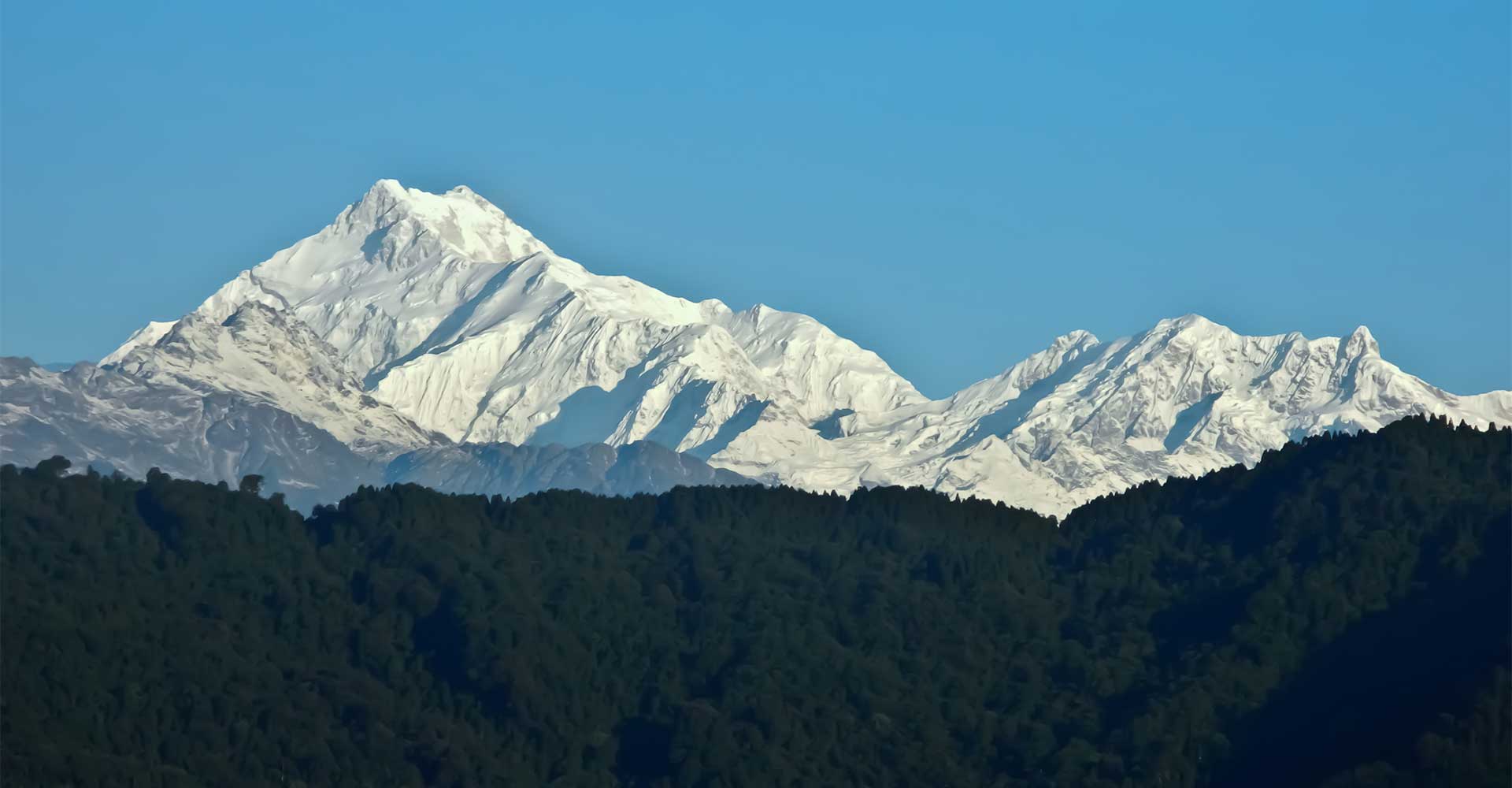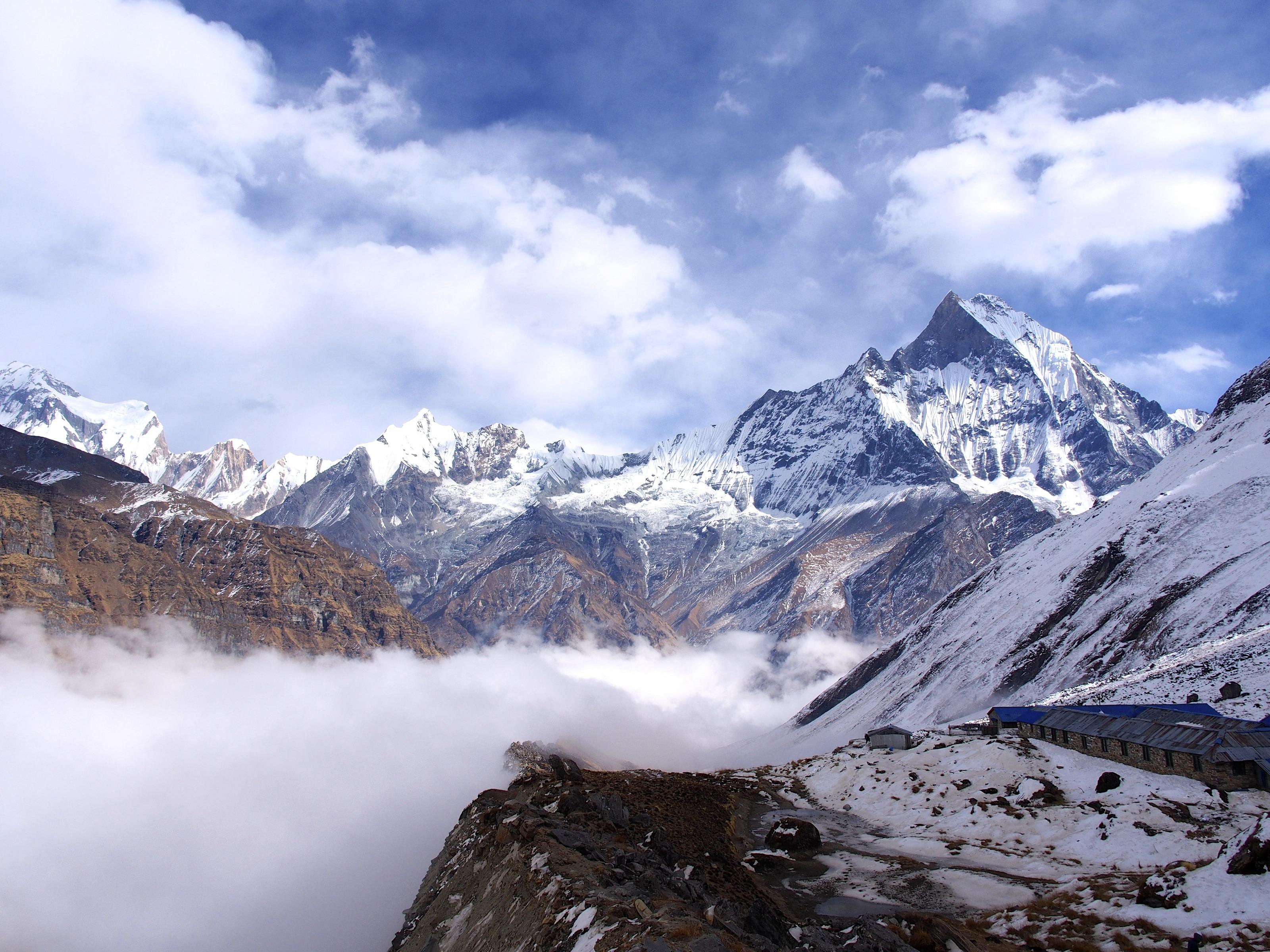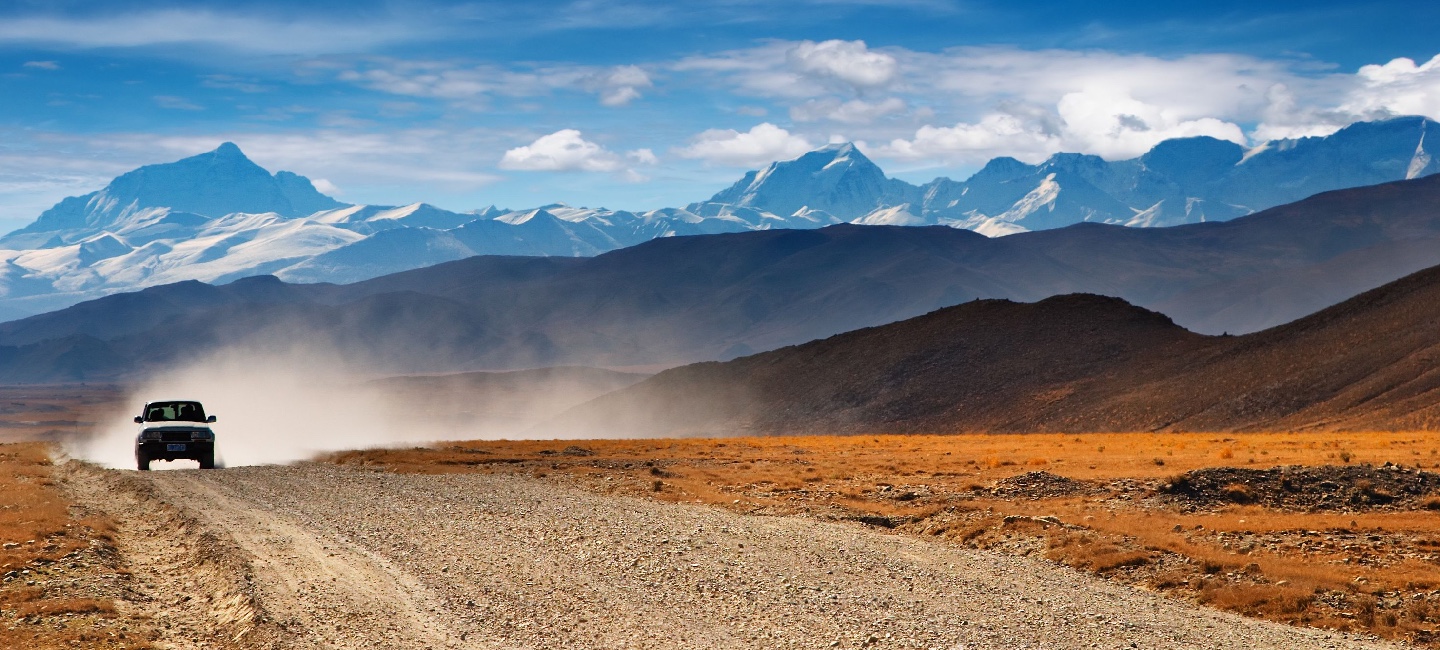Himalaya tour – The Himalayas, a majestic mountain range spanning Asia, beckon adventure seekers with its awe-inspiring beauty and challenging trails. This comprehensive guide will provide you with all the essential information you need to plan and experience an unforgettable Himalayan trek.
From choosing the right trek for your fitness level to packing for the high altitude, we’ll cover every aspect of your Himalayan journey. Along the way, we’ll share tips on acclimatizing to the altitude, staying safe on the trails, and immersing yourself in the local culture.
Introduction
The Himalayas, the abode of snow, are a magnificent mountain range that stretches across the northern borders of India, Nepal, Bhutan, China, and Pakistan. These mountains are not only a sight to behold but also hold immense religious and cultural significance for people around the world.
The Himalayas offer a wide range of trekking routes, catering to all levels of experience and fitness. Whether you are a seasoned trekker or a novice looking for a gentle introduction to the mountains, there is a route that will suit your needs.
Trekking Routes
Some of the most popular trekking routes in the Himalayas include:
- The Everest Base Camp Trek: This trek takes you to the base of Mount Everest, the highest mountain in the world. The trek is challenging but offers stunning views of the Himalayas.
- The Annapurna Circuit Trek: This trek takes you around the Annapurna Massif, one of the most beautiful mountain ranges in the Himalayas. The trek offers a variety of landscapes, from lush forests to high-altitude passes.
- The Langtang Valley Trek: This trek takes you through the Langtang Valley, a beautiful valley that is home to a variety of wildlife. The trek is relatively easy and is suitable for beginners.
Planning Your Trek

Embarking on a Himalayan trek is an exhilarating experience that demands careful planning. It is essential to select a trek that aligns with your fitness level and trekking experience to ensure a safe and enjoyable journey. Additionally, it is crucial to obtain the necessary permits and adhere to the regulations governing trekking in the Himalayas.
Choosing the Right Trek
When selecting a trek, consider your physical fitness, prior trekking experience, and the duration and altitude of the trek. For beginners, it is advisable to start with shorter treks at lower altitudes, gradually increasing the difficulty as you gain experience.
It is also recommended to consult with experienced trekkers or trekking agencies to gather insights and recommendations.
Permits and Regulations
Trekking in the Himalayas requires obtaining the appropriate permits and adhering to the regulations set by the local authorities. These permits typically include the Trekking Permit, National Park Permit, and Conservation Area Permit. It is important to apply for these permits well in advance to avoid any delays or complications during your trek.
Packing for a Himalayan Trek
Packing for a Himalayan trek requires careful consideration of the varying weather conditions and challenging terrain. It is essential to pack light yet bring all the necessary gear. This includes sturdy hiking boots, comfortable clothing, a warm sleeping bag, a first-aid kit, and essential toiletries.
Additionally, it is advisable to carry a water purification system or tablets to ensure access to safe drinking water throughout your trek.
Trekking the Himalayas
Embarking on a Himalayan trek is an experience of a lifetime, offering breathtaking vistas and unparalleled challenges. The terrain you’ll encounter is as diverse as the region itself, ranging from lush valleys to rugged peaks, glacial lakes to high-altitude passes.
Acclimatizing to the high altitude is crucial for a successful trek. Gradually ascend to higher elevations over several days, allowing your body to adjust to the reduced oxygen levels. Stay well-hydrated, consume a nutritious diet, and listen to your body for signs of altitude sickness.
Challenges and Rewards
Trekking in the Himalayas presents both challenges and rewards. The physical exertion, altitude, and unpredictable weather can test your limits. However, the stunning scenery, sense of accomplishment, and cultural immersion make it all worthwhile.
Accommodations and Food
The Himalayas offer a range of accommodations to suit different budgets and preferences. From luxurious lodges to budget-friendly guesthouses, there are options for every traveler. Many lodges are located along popular trekking routes, providing comfortable accommodations and meals for trekkers.
The local cuisine in the Himalayas varies depending on the region. In Nepal, popular dishes include dal bhat (a lentil soup with rice), momos (steamed dumplings), and chow mein (a noodle dish). In Tibet, you’ll find dishes like thukpa (a noodle soup), tsampa (roasted barley flour), and yak butter tea.
Staying Healthy and Hydrated
Staying healthy and hydrated is essential for a successful trek in the Himalayas. Drink plenty of water throughout the day, especially at high altitudes where the air is thinner. Eat nutritious meals and snacks to provide your body with the energy it needs.
Avoid alcohol and caffeine, as these can dehydrate you.
Safety and Precautions
Trekking in the Himalayas is an incredible experience, but it’s crucial to prioritize safety and take necessary precautions. Adhering to safety guidelines, avoiding altitude sickness, and respecting the local culture and environment are essential for a safe and fulfilling trek.
To ensure a safe trekking experience, follow these guidelines:
Acclimatization and Altitude Sickness
- Allow ample time for acclimatization to the high altitude to prevent altitude sickness.
- Ascend gradually, spending extra nights at higher altitudes to allow your body to adjust.
- Stay hydrated by drinking plenty of water and electrolyte-rich fluids.
- Recognize symptoms of altitude sickness, such as headache, nausea, and fatigue, and descend immediately if necessary.
Weather Conditions
- Be prepared for unpredictable weather conditions, including rain, snow, and strong winds.
- Carry appropriate clothing and gear, including waterproof layers, warm layers, and sturdy footwear.
- Check weather forecasts and be flexible with your itinerary if necessary.
Physical Fitness and Health
- Ensure you are physically fit and healthy for the trek’s duration and difficulty level.
- Consult a healthcare professional before the trek to discuss any health concerns or medications.
- Bring a first-aid kit and basic medications to address minor injuries or ailments.
Respect for Local Culture and Environment
- Respect the local culture and traditions, including customs, dress, and religious beliefs.
- Minimize your environmental impact by packing out all trash and avoiding littering.
- Support local communities by patronizing their businesses and respecting their way of life.
Itinerary and Highlights
The Himalayan trek itinerary varies depending on the route chosen, the time of year, and the trekkers’ fitness level. However, most treks typically follow a similar pattern, starting with a gradual ascent to acclimatize to the altitude and ending with a challenging summit attempt.
The highlights of a Himalayan trek include stunning mountain scenery, diverse flora and fauna, and the opportunity to experience different cultures and traditions. Some of the key attractions and landmarks along the popular trekking routes include Mount Everest, Annapurna Base Camp, Gokyo Lakes, and the Everest Base Camp Trek.
Duration and Difficulty
The duration of a Himalayan trek can range from a few days to several weeks, depending on the route and the trekkers’ pace. The difficulty of the trek also varies depending on the altitude, terrain, and weather conditions. Some treks are suitable for beginners, while others require a high level of fitness and experience.
- Easy treks:These treks are typically short in duration and follow well-established trails. They are suitable for beginners and families with children.
- Moderate treks:These treks involve longer distances and higher altitudes. They require a good level of fitness and some trekking experience.
- Challenging treks:These treks are physically demanding and require a high level of fitness and experience. They often involve steep ascents, difficult terrain, and extreme weather conditions.
Photography and Videography
Capturing the beauty of the Himalayas through photography and videography is an incredible way to preserve your memories and share the experience with others. Here are some tips to help you get the most out of your photographic journey:
Respect the privacy of local people. Always ask for permission before taking their photos or videos, and be mindful of their customs and traditions.
Camera Equipment
- Camera:A DSLR or mirrorless camera with interchangeable lenses will give you the most flexibility and control over your images.
- Lenses:A wide-angle lens (16-35mm) is essential for capturing the vast landscapes, while a telephoto lens (70-200mm) will allow you to zoom in on distant subjects.
- Tripod:A tripod will help you stabilize your camera for sharper images, especially in low-light conditions.
- Filters:Polarizing and UV filters can help reduce glare and protect your lens.
Composition Techniques
- Rule of thirds:Divide your frame into thirds both horizontally and vertically, and place your subject at one of the intersections.
- Leading lines:Use natural elements like rivers, trails, or mountain ridges to draw the viewer’s eye into the image.
- Framing:Use natural elements like trees, rocks, or buildings to frame your subject and create a sense of depth.
Lighting
- Golden hour:The hour after sunrise and before sunset offers the most flattering light for photography.
- Overcast days:Diffused light on overcast days can create even lighting and reduce harsh shadows.
- Night photography:Use a tripod and long exposure settings to capture the beauty of the night sky.
Permits
Some areas of the Himalayas require permits for photography and videography. Check with local authorities before your trek to determine if you need a permit.
Cultural Immersion
Immersing yourself in the local culture is an essential part of any Himalayan trek. Interacting with local people will give you a deeper understanding of their way of life, traditions, and beliefs.
To learn about the local culture, take the time to talk to people you meet along the trail. Ask them about their lives, their families, and their customs. Visit local villages and temples, and attend any festivals or events that are happening during your trek.
Supporting Local Businesses and Initiatives
One of the best ways to support the local culture is to support local businesses. Buy souvenirs from local artisans, eat at local restaurants, and stay in locally-owned guesthouses. This will help to ensure that the benefits of tourism are shared with the local community.
Environmental Conservation: Himalaya Tour
The Himalayas, with its pristine beauty and diverse ecosystems, is a natural wonder that demands our utmost care. As trekkers, we have a responsibility to minimize our environmental impact and preserve this fragile environment for generations to come.
Here are some key tips to help you trek responsibly:
Reducing Waste
- Pack light and avoid bringing unnecessary items.
- Carry reusable water bottles and containers to minimize plastic waste.
- Dispose of waste properly in designated bins or carry it out with you.
Conserving Water, Himalaya tour
- Bring a water purification system to treat water from natural sources.
- Use water sparingly for washing and other purposes.
- Avoid using disposable wipes or other water-intensive products.
Protecting Wildlife
- Respect wildlife by observing them from a distance.
- Do not feed or disturb animals, as this can alter their natural behavior.
- Report any sightings of endangered or threatened species to park authorities.
Tourism can also play a positive role in conservation efforts. By supporting local businesses that prioritize sustainability, trekkers can contribute to the preservation of the Himalayas. This includes choosing tour operators that implement responsible practices, such as waste management and wildlife protection.
Conclusion

Embarking on a Himalayan trek is an experience that will leave an indelible mark on your soul. The breathtaking landscapes, rich cultural heritage, and physical challenges will push you to your limits and create memories that will last a lifetime.
Consider planning your Himalayan adventure today and witness the magic of these majestic mountains firsthand.
For assistance in planning your trek, we recommend reputable trekking companies such as [Company Name], [Company Name], and [Company Name]. Their experienced guides and comprehensive services will ensure a safe and unforgettable journey.
Final Wrap-Up

Whether you’re a seasoned hiker or a first-time trekker, the Himalayas offer an unparalleled adventure that will leave a lasting impression. With careful planning and preparation, you can conquer the challenges of the mountains and create memories that will last a lifetime.
So, what are you waiting for? Start planning your Himalayan trek today and embark on an unforgettable journey into the heart of the world’s highest mountains.
Questions Often Asked
What is the best time to go on a Himalayan trek?
The best time to trek in the Himalayas is during the spring (March-May) or autumn (September-November) when the weather is generally stable and clear.
How do I choose the right trek for me?
Consider your fitness level, experience, and interests when choosing a trek. There are treks suitable for all levels of hikers, from beginner-friendly trails to challenging expeditions.
What are the essential items I need to pack for a Himalayan trek?
Essential items include a backpack, trekking boots, warm clothing, rain gear, a first-aid kit, and a water bottle. Be sure to pack light and leave unnecessary items behind.
How do I stay safe while trekking in the Himalayas?
Follow safety guidelines, such as staying on marked trails, drinking plenty of water, and acclimatizing to the altitude gradually. Always inform someone of your itinerary and carry a whistle or other signaling device in case of an emergency.